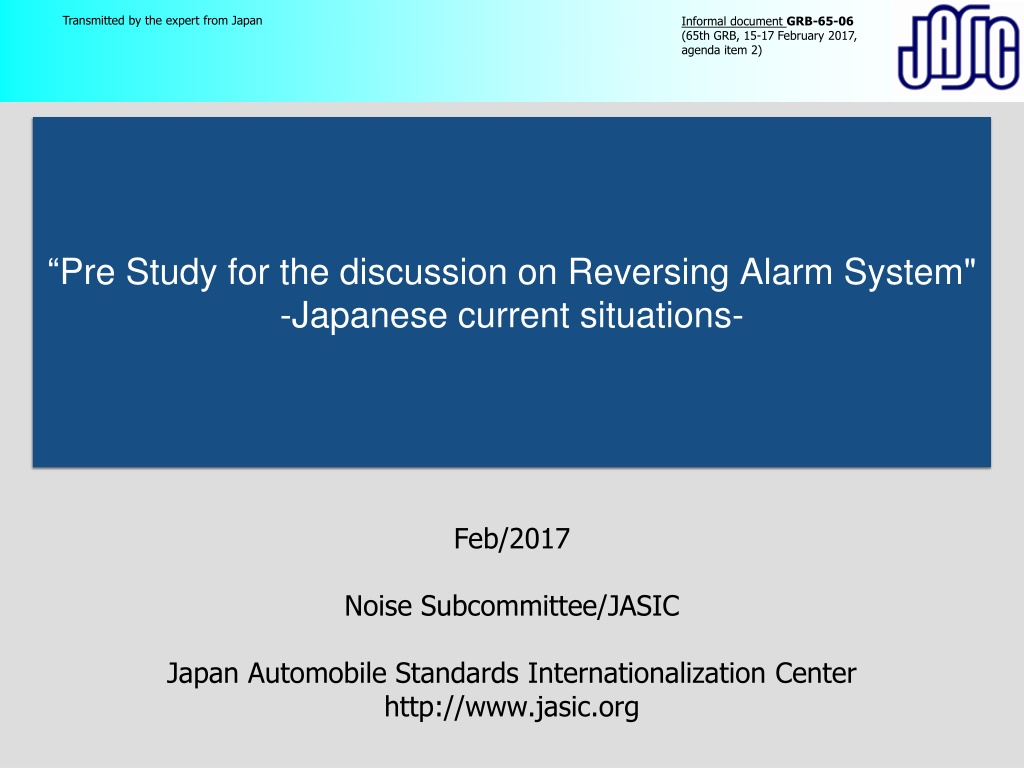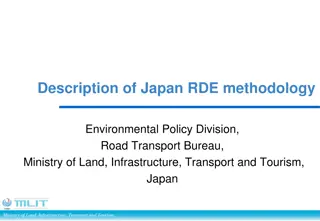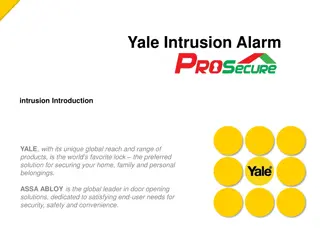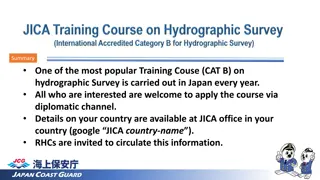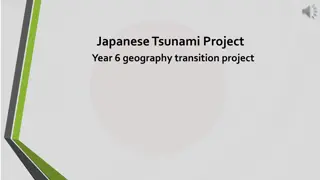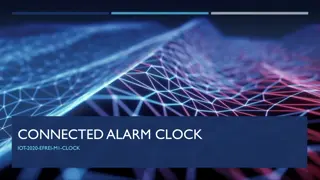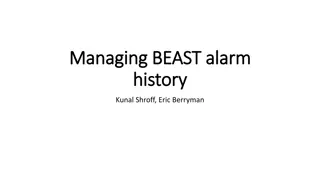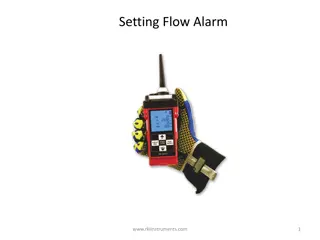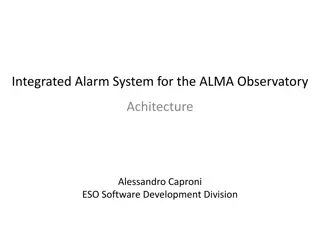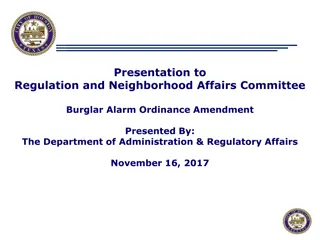Reversing Alarm System Standards in Japan
Detailed overview of the technical standards, history, and current situation of reversing alarm systems in Japan, including information on JASO D901 standard, attachment rates for new vehicles, and measurement results. Explore the development, requirements, and implementation of reversing alarms in Japanese automobile standards.
Uploaded on Mar 06, 2025 | 0 Views
Download Presentation

Please find below an Image/Link to download the presentation.
The content on the website is provided AS IS for your information and personal use only. It may not be sold, licensed, or shared on other websites without obtaining consent from the author.If you encounter any issues during the download, it is possible that the publisher has removed the file from their server.
You are allowed to download the files provided on this website for personal or commercial use, subject to the condition that they are used lawfully. All files are the property of their respective owners.
The content on the website is provided AS IS for your information and personal use only. It may not be sold, licensed, or shared on other websites without obtaining consent from the author.
E N D
Presentation Transcript
Transmitted by the expert from Japan Informal document GRB-65-06 (65th GRB, 15-17 February 2017, agenda item 2) Pre Study for the discussion on Reversing Alarm System" -Japanese current situations- Feb/2017 Noise Subcommittee/JASIC Japan Automobile Standards Internationalization Center http://www.jasic.org
Contents 1. Technical Standard and History in Japan 2. Reversing alarm standard for unit ( JASO D901) 3. The attachment rate of the reversing alarm System for new Vehicles and sound pressure level 4. Questionnaire Research ( Truck & Bus users ) 2
1. Technical Standard and History in Japan * To equip reversing alarms is not mandatory. It is allowed to be equipped. Reversing Alarm equipment is available for Retrofit * In 1963, a Japanese company succeeded in developing the world s first reversing alarm system. * JASO (Japanese Automobile Standards Organization) established D901 "Reverse buzzer standard" in 1975. 3
JASO : Japanese Automobile Standards Organization 4
2. Reversing alarm standard for unit : JASO D901 D901 : Main requirements 1. Sound pressure level Distance from the buzzer to microphone 1m, measured in anechoic chamber : 75 - 95 dB 2. Fundamental frequency : 400 - 4000 Hz no fluctuation) 3. The intermittence number per minute : 60 - 120 count/min 5
3. The attachment rate of the reversing alarm system for new Vehicles All new motor vehicles sold in Japan of categories N2, N3, and M3 are equipped with reversing alarms (beep type). Categories Company A Company B Company C Company D M3 100% 100% 100% N3 100% 100% 100% 100% N2 100% 100% 100% 100% 6
Measuring Point same as Germany Proposal Measuring Point: Distance from the end of the vehicle: 7m Maximum sound level during microphone height: 0.5 1.5 0.5 1.5 7
Measurement results of SPL N3 : 59.9 75.0 BA (Ave. 67.4dBA) N2 71.2 78.9 BA M3 : 56.9 69.1 BA (Ave. 62.6dBA) (Ave. 75.6dBA) N3 Ave. 67.4 N2 Ave. 75.6 M3 Ave. 62.6 8
4. Questionnaire Research (Truck & Bus users) Number of company which responded our questionnaire Trucking Association (JTA) Road Contractors Association (JRCA) Bus Association (NBA) Sum Responded Company Total Owned Vehicle Number 159 98 49 307 about 10,200 about 5,800 about 1,900 about 2,500 How many vehicle does your company have? 9 JRCA JTA NBA
What is a major vehicle type at your workplace? Japan Trucking Association (JTA) & Japan Road Contractors Association (JRCA) No. of cases. (%) JTA JRCA Tractors Heavy duty Medium duty Small duty Mltiple category 15 (9.4) 62 (39.0) 54 (34.0) 5 (3.1) 23 (14.5) 2 (2.0) 45 (45.9) 24 (24.5) 5 (5.1) 22 (22.5) Nihon Bus Association (NBA) No. of cases. (%) NBA Large buses Medium buses Large & Medium 41 (83.7) 2 (4.1) 6 (12.2) 10
Are your Main owned Vehicles Equipped with Reversing Alarms? NBA (n=45) JRCA (n=95) JTA (n=157) Almost all companies own vehicles equipped with reversing alarms. One bus company answered "None", however all the buses owned by the company are equipped with reversing camera. 11
Do you think motor vehicles need reversing alarms? No. of cases. (%) JTA JRCA NBA Necessary for all motor vehicles Necessary for certain types of motor vehicles Not necessary for any motor vehicles 141 (88.7) 91 (92.9) 43 (87.8) 11 (6.9) 5 (5.1) 2 (4.1) 3 (1.9) 1 (1.0) 2 (4.1) Others 2 (1.3) 1 (1.0) 0 (0) No answer 2 (1.3) 0 (0) 2 (4.1) Total 159 (100) 98 (100) 49 (100) A lot of companies answered that reversing alarm is necessary for all motor vehicles. 5 of 6 companies who answered not necessary for any own vehicles equipped with reversing camera. 12
NBA n=41 Somewhat quiet Somewhat loud JRCA n=94 Daytime Just right Too quiet Too loud JTA n=145 NBA n=37 Somewhat quiet JRCA n=92 Night Just right Somewhat loud Too loud Too quiet JTA n=132 13
NBA n=6 JRCA n=31 Daytime Just right JTA n=41 NBA n=9 JRCA n=32 Night Just right Too loud JTA n=40 14
Have Local Residents Ever Complained About Reversing Alarms? NBA n=49 Don t Know Don t have any motor vehicles with reversing alarms Yes, but not in the last 12 month Yes JRCA n=97 Never in the last 12 month JTA n=157 NBA n=8 JRCA n=30 JTA n=36 15
To ensure safety while reversing the vehicle, do you use any equipment or take any measures other than reversing alarms? (Multiple answers allowed) JTA JRCA JBA Reversing cameras 82.9 52.7 100.0 Rear sonars 2.4 7.3 12.5 Directional microphones Someone guiding while reversing Others 0.0 0.0 50.0 19.5 47.3 18.8 2.4 10.9 0.0 Many companies use several equipment (especially reversing cameras) other than reversing alarms, to ensure safety while reversing the vehicle. 'Directional microphones' are used in Bus association only 16
Outline of the results of the survey All new motor vehicles sold in Japan of categories N2, N3, and M3 are equipped with reverse alarms (beep type), which are in fairly high demand from operation managers of automotive transport companies who own trucks and buses. - Though differing somewhat depending on the vehicle category, the sound level of reverse alarms commonly used in Japan is typically 60 78 dB (measured by the method proposed by Germany). - Most operation managers feel the sound level of reverse alarms (60 78 dB) is just right in the daytime, but a majority feel it is too loud at night. - Regarding the use of reverse alarms, roughly half of operation managers have received complaints from local residents. - In addition to reverse alarms, most motor vehicles of categories N2, N3, and M3 are equipped with reverse cameras to ensure safety while reversing. In some cases, even further measures are taken such as sonars, microphones, and someone guiding while reversing. 17
